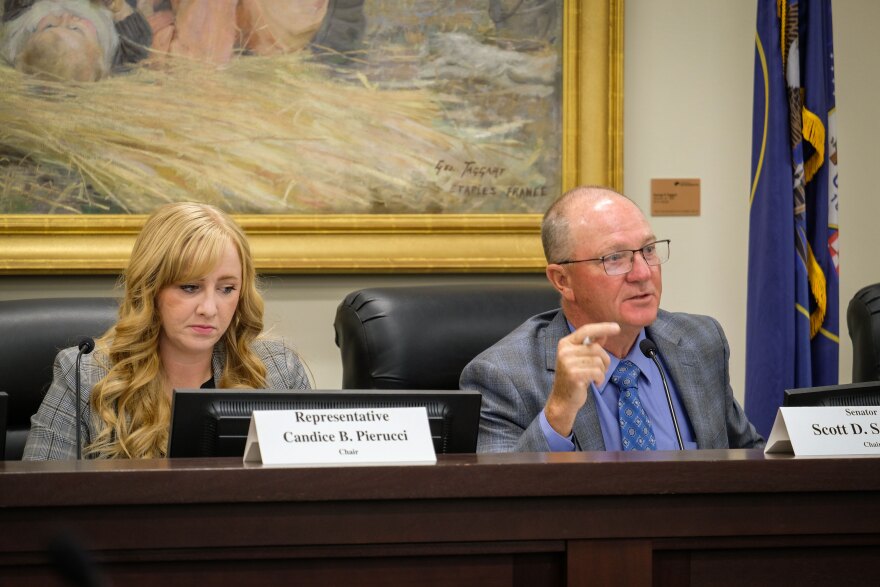The fight over the future of Utah’s congressional boundaries came to a head during a special legislative session Oct. 6, when lawmakers officially advanced Map C.
The vote came as a sigh of relief for Republicans, who made it no secret that they felt Map C best represented the state's congressional districts. During the 10-day voting period, the state Republican Party sent out a mass email urging members to publicly show support for Map C.
The chosen map splits three cities (North Salt Lake, Millcreek and Pleasant Grove) and three counties (Davis, Salt Lake and Utah), which, out of all six maps presented, makes it the most favorable to maintaining Republican representation in Washington.
Redistricting committee member Rep. Stephanie Gricius said that she felt it was best placed to serve Utah moving forward.
“When we first reviewed these maps, I really, really liked the distribution of military installations that this map has, and I think that it's a great map to maximize our representation there,” she said.

Democrats, however, are still not happy and see the legal fight over the state’s congressional districts continuing.
One hour before the start of the special session, the redistricting committee met to announce its favored map. The committee’s only two Democrats, Senate Minority Leader Luz Escamilla and Rep. Doug Owens, objected to the recommendation before it went to the Legislature for a vote.
“After myself going through the process of working with maps and understanding that there are lots of limitations, I do believe that this specific map does not follow redistricting requirements and standards of Prop 4,” Escamilla said.
The 56-17 final House vote (the Senate vote was 18-9) in favor of Map C comes after years of legal back-and-forth stemming from a 2018 citizen-led ballot measure that created, among other things, a nonpartisan redistricting process and independent commission to draw the state’s maps. After the passage of Proposition 4, the Republican supermajority then changed the law to make the independent commission advisory only and passed their own maps in 2021, creating four safe Republican congressional districts.
Prop 4 supporters sued the state over the 2021 congressional map, and state courts ordered the Legislature back to the drawing board after an August ruling found that lawmakers violated the state constitution by disregarding the intent of voters. Though Utah’s redistricting process began at the state level in 2022, it has unwittingly landed in the middle of a national redistricting fight. Earlier this year, President Donald Trump called for Republican-led states to redraw their maps ahead of 2026 to help the party win more seats.
Texas was the first to rise to the cause in an attempt to gain another five seats. Missouri then followed and redrew its maps in a way that could oust a Democratic congressman. To counter Texas, Democrat-run California called for voters to approve a new map that could help their party win five seats in Washington, too.
Now that the Utah Legislature has voted on Map C, here are the next steps in the process, according to a timeline developed by attorneys for both sides in the case:
- Oct. 17: Both parties give the court any materials supporting their map and in opposition to the other
- Oct. 23-24: If needed, the court holds an evidentiary hearing
- Oct. 28: Both sides will submit to the court what they think the judge should conclude
Finally, once a new congressional map has been decided on, it needs to be solidified by Nov. 10. This is the date outlined by Lt. Gov. Deidre Henderson in a court filing that would give county clerks enough time to get ready for the 2026 midterm election.
There is another wrinkle, however. During the redrawing process, Sen. Brady Brammer proposed two new partisan tests to the existing set of standards that will regulate future redistricting processes. As part of the special session, lawmakers also passed that bill to codify the three tests into law: partisan bias, ensemble analysis and the median-mean difference test.
The plaintiffs in the original suit that started this whole process, the League of Women Voters of Utah and Mormon Women for Ethical Government, filed a lawsuit as soon as the bill was passed. They called the set of standards a “wolf in sheep's clothing” in the court documents and said, “at the eleventh hour the Defendants [Legislature] have once again tried to change the rules of the game.”





